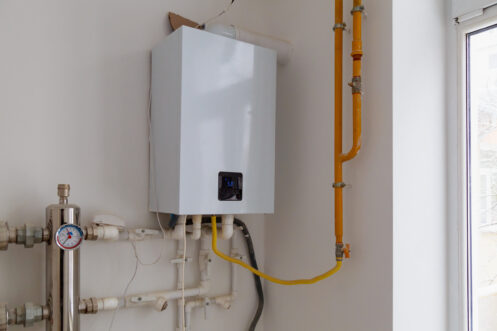They are making several great points on Water Heater Maintenance Tips You Can't Afford to Forget in general in this content below.

Warm water is important for day-to-day convenience, whether it's for a refreshing shower or cleaning recipes. To guarantee your hot water system runs efficiently and lasts much longer, routine upkeep is key. This short article provides useful pointers and insights on exactly how to maintain your home's warm water system to stay clear of interruptions and pricey repair work.
Intro
Maintaining your home's hot water system could seem difficult, yet with a few easy actions, you can ensure it runs efficiently for years to find. This overview covers everything from comprehending your warm water system to do it yourself maintenance suggestions and recognizing when to call professional help.
Value of Keeping Your Hot Water System
Routine upkeep not only prolongs the life-span of your warm water system yet also ensures it operates efficiently. Ignoring upkeep can bring about lowered efficiency, higher energy bills, and also early failure of the system.
Indications Your Warm Water System Demands Upkeep
Recognizing when your warm water system requires focus can prevent significant concerns. Look out for indications such as irregular water temperature level, weird sounds from the heating system, or corroded water.
Understanding Your Hot Water System
Prior to diving right into upkeep tasks, it's valuable to comprehend the standard components of your hot water system. Usually, this includes the water heater itself, pipes, anode rods, and temperature controls.
Monthly Maintenance Tasks
Routine month-to-month checks can aid capture small concerns prior to they escalate.
Flushing the Hot Water Heater
Flushing your water heater eliminates sediment buildup, improving efficiency and prolonging its life.
Monitoring and Changing Anode Rods
Anode rods prevent deterioration inside the container. Inspecting and replacing them when broken is important.
Inspecting and Readjusting Temperature Setups
Changing the temperature setups makes certain optimal efficiency and security.
DIY Tips for Upkeep
You can carry out a number of maintenance jobs on your own to keep your hot water system in top problem.
Looking for Leaks
Regularly evaluate pipelines and links for leakages, as these can result in water damage and greater costs.
Checking Stress Alleviation Valves
Checking the stress safety valve guarantees it works correctly and prevents too much stress accumulation.
Insulating Pipelines
Protecting hot water pipelines minimizes warmth loss and can save energy.
When to Call a Specialist
While DIY upkeep is advantageous, some concerns need professional experience.
Complex Concerns Calling For Professional Help
Instances include significant leakages, electrical issues, or if your water heater is consistently underperforming.
Routine Specialist Maintenance Advantages
Professional maintenance can include complete evaluations, tune-ups, and making certain compliance with safety and security standards.
Verdict
Regular upkeep of your home's hot water system is crucial for effectiveness, long life, and expense savings. By complying with these pointers and understanding when to look for expert help, you can make sure a dependable supply of warm water without unexpected interruptions.
How to Maintain an Instant Hot Water Heater
Before tinkering with your hot water heater, make sure that it’s not powered on. You also have to turn off the main circuit breaker and shut off the main gas line to prevent accidents. Also turn off the water valves connected to your unit to prevent water from flowing into and out of the appliance. 2. When you’re done, you have to detach the purge valves’ caps. These look like the letter “T” and are situated on either side of the water valves. Doing so will release any pressure that has accumulated inside the valves while at the same time avoid hot water from shooting out and burning your skin. 3. When the purge valves’ caps are removed, you have to connect your hosing lines to the valves. Your unit should have come with three hoses but if it didn’t, you can purchase these things from any hardware or home repair shops. You can also get them from retail stores that sell water heating systems. Read the user’s manual and follow it to complete this task properly. When the hosing lines are connected, open the purge port’s valves. 4. You should never use harsh chemical cleaners or solutions when cleaning your unit. Make use of white vinegar instead. It should be undiluted and you’ll probably use about 2 gallons. 5. Now flush your water heater. This task should probably take about 40 minutes. We can’t give you specific directions for this because the procedure is carried out depending on the type, model and brand of your heater. With that being said, refer to the user’s manual. 6. When you’re done draining the unit, you have to turn off the purge port valves again. Remove the hosing lines that you earlier installed on each of the water valves. Put the valve caps (purge port) back in their respective places and be very careful so as not to damage the rubber discs that are found inside these caps. 7. Now that everything’s back in place, check your user’s manual again to find out how to reactivate your water heating system. 8. Once it is working, turn one of your hot water faucets on just to let air pass through the heater’s water supply pipes. Leave the tap on until water flows smoothly out of it. https://www.orrplumbing.com/blog/2014/september/how-to-maintain-an-instant-hot-water-heater/

We had been made aware of that write-up on Tips on Maintaining a Water Heater from an associate on our other web blog. Are you aware of another person who is excited by the topic? Feel free to promote it. We enjoy your readership.
Need Help? Hire Us Now!